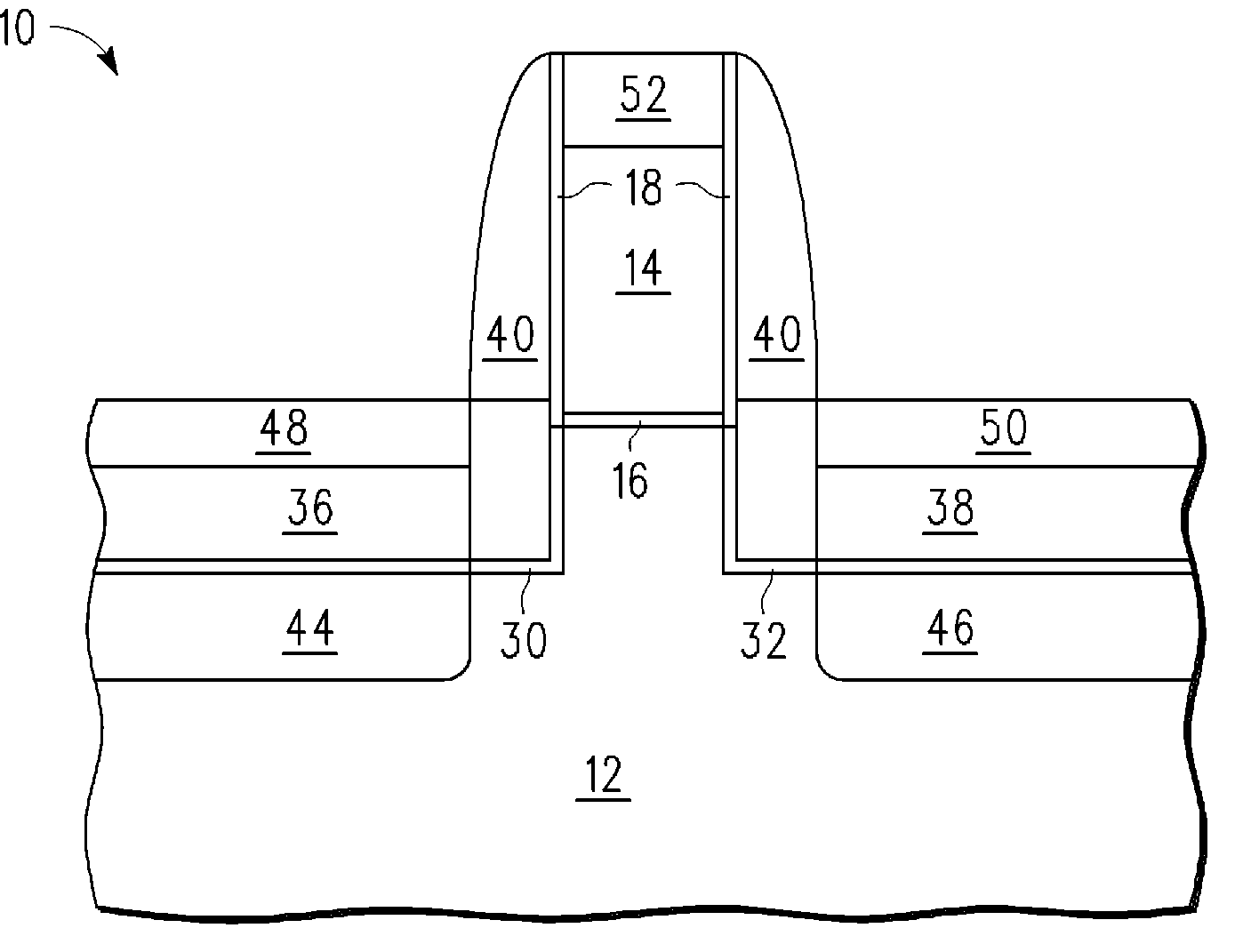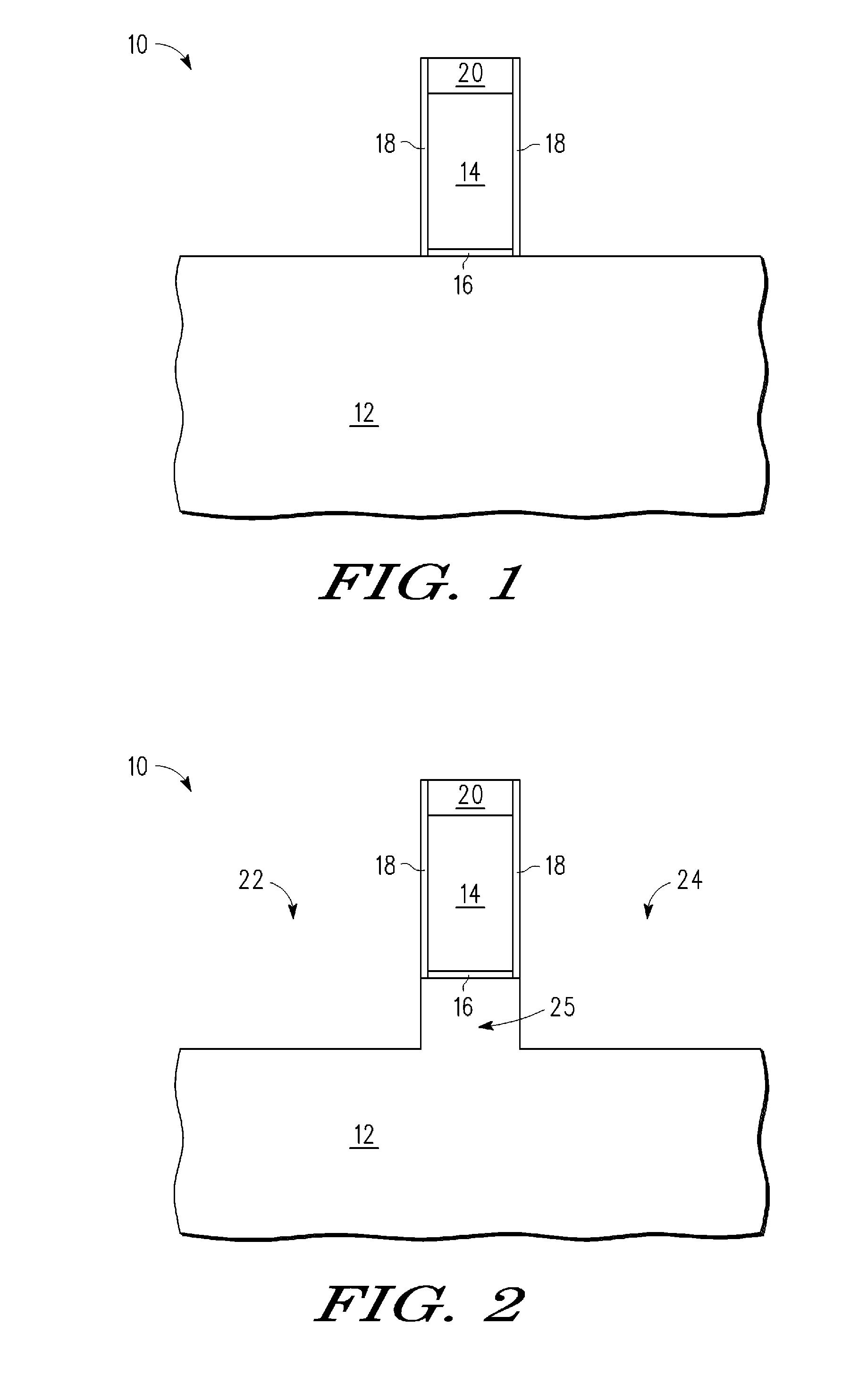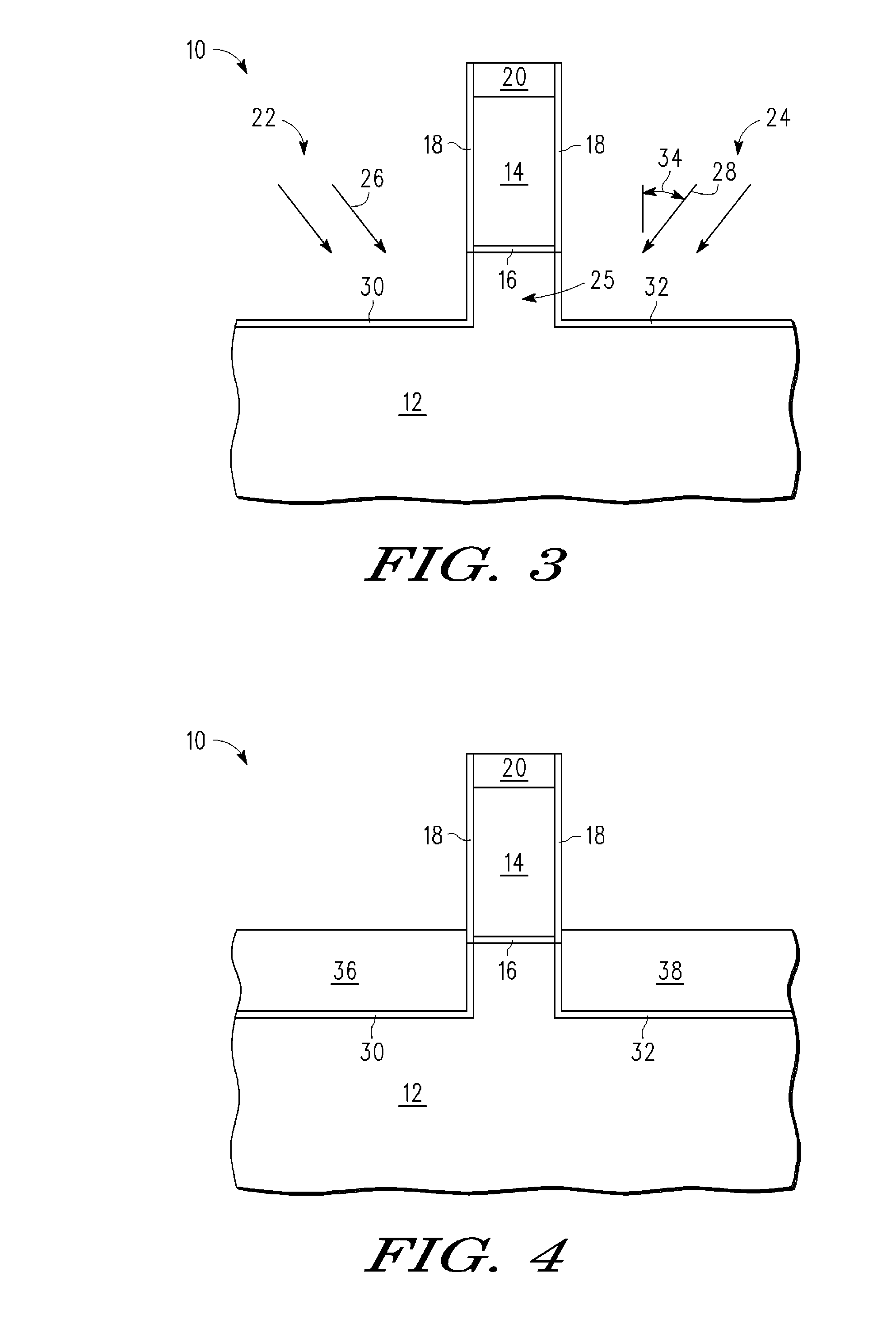Method for forming a transistor having gate dielectric protection and structure
a gate dielectric and protection technology, applied in the direction of transistors, semiconductor devices, electrical equipment, etc., can solve the problems of reducing the life of the device, boron penetration into the gate dielectric has been a long-standing problem, and the gate side is generally the greater problem
- Summary
- Abstract
- Description
- Claims
- Application Information
AI Technical Summary
Problems solved by technology
Method used
Image
Examples
Embodiment Construction
[0014]In one aspect, a semiconductor device is made by forming a gate stack, which is over a semiconductor layer that is used as a mask in recessing the semiconductor layer leaving a semiconductor pillar under the gate stack. Sidewalls of the pillar are doped with nitrogen, or some other dopant blocking species, to form a dopant blocking layer inside the pillar along its sidewall. The recesses are filled with semiconductor material for use as source / drains. There is then a completed transistor having a gate stack over the semiconductor layer that functions as a channel that has at its ends a dopant blocking layer. The dopant blocking layer, which preferably contains nitrogen or carbon for the case where the source / drains have boron as the dopant, which is the typical case for P channel transistors. This is better understood with reference to the drawings and the following description.
[0015]The semiconductor substrate described herein can be any semiconductor material or combinations...
PUM
 Login to View More
Login to View More Abstract
Description
Claims
Application Information
 Login to View More
Login to View More - R&D
- Intellectual Property
- Life Sciences
- Materials
- Tech Scout
- Unparalleled Data Quality
- Higher Quality Content
- 60% Fewer Hallucinations
Browse by: Latest US Patents, China's latest patents, Technical Efficacy Thesaurus, Application Domain, Technology Topic, Popular Technical Reports.
© 2025 PatSnap. All rights reserved.Legal|Privacy policy|Modern Slavery Act Transparency Statement|Sitemap|About US| Contact US: help@patsnap.com



